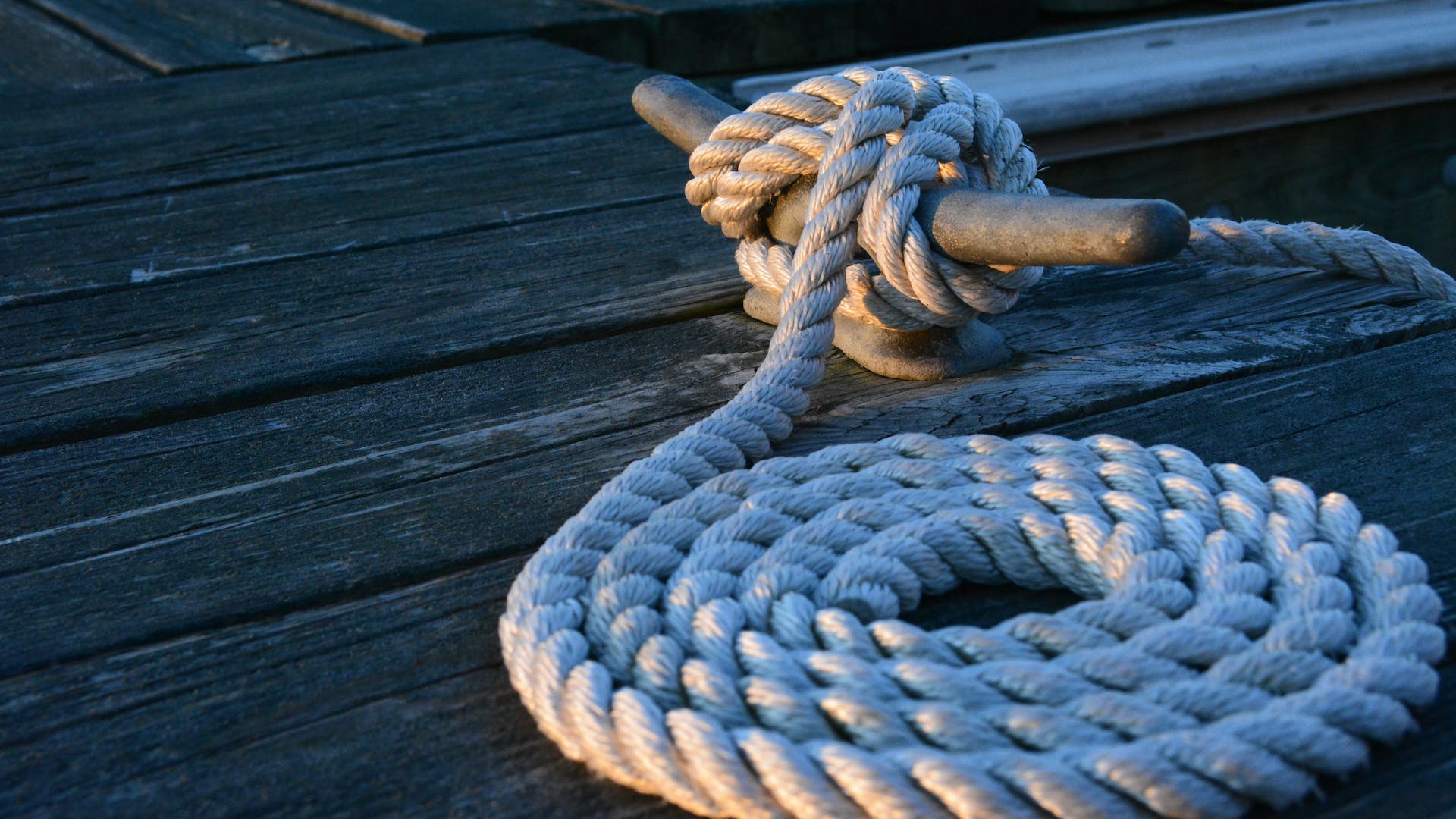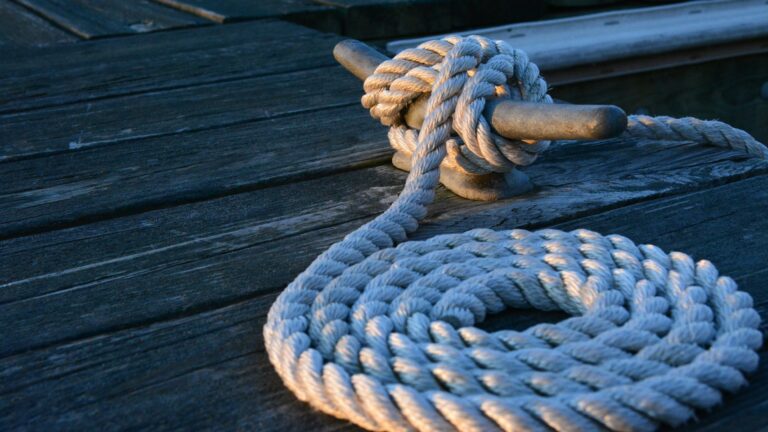What Is The Best Knot To Join Two Lines?
Introduction
Sailing requires a great deal of skill and knowledge, from handling the ship to understanding how knots can be used to secure ropes, sails and other materials together. In sailing, knots are an essential part of rigging, anchoring and making repairs, they are used to join two or more lines together or to secure items in place on board a boat or vessel. One of the best and most reliable knots for joining lines together is known as the Surgeon’s Knot (also known as a double surgeon’s knot). This article will discuss what a knot is, different types of knots, how to tie a surgeon’s knot and its advantages and disadvantages.
What is a Knot?
A knot is essentially an interlacement of two or more strands that form a loop or loops that often have an eye at one end through which another line can be passed, this enables two lines to be joined together without using any additional materials such as tape or clips (although these can be used in combination with knots). They are used in sailing for securing sailcloth, securing items on board, lowering sails, tying up moorings, tying two lines together and much more besides, there are hundreds of different types of knots available depending on what you are trying to achieve, ranging from complex decorative knots such as Turk’s head knots to simple utilitarian knots like bowlines and sheet bends.
Types of Knots
There are four main categories when it comes to sailing knots: binding knots (used for attaching items), splicing (used for joining rope ends together), hitches (used for tying rope ends onto objects) and decorative knots (used for decoration or signaling). Within each category there are several different types of knot, the most common being bowlines, figure eights, sheet bends, half hitches and bowline hitches – all of which have their own uses depending on what you need to accomplish on board your vessel.
The Surgeon’s Knot
The surgeon’s knot is one of the best and easiest to tie knots when it comes to joining lines together – particularly those that have equal or unequal diameters – making it ideal for sailors who want an effective way to join two ropes without having to use additional equipment such as tape or clips. It is also very strong, once it has been tied correctly it will not slip even under extreme pressure! Additionally, it is easy to untie after use – something that cannot be said about many other types of knot! So why not give it a try?
Benefits of the Surgeon’s Knot
One major benefit of using a surgeon’s knot over other types of knot when joining two lines is its strength, once correctly applied it will not slip under pressure – making it ideal for applications where extra safety is required such as when mooring or anchoring a vessel! Additionally, because it does not require any additional materials such as tape or clips it can save time both in terms of preparation and in terms of application time when compared with other methods, this makes it perfect for sailors who need something quick and effective! Finally, due its simplicity even novice sailors should be able to master this type of knot with ease – making it perfect for all levels!
Tying the Surgeon’s Knot
Tying a surgeon’s knot is relatively straightforward once you understand how it works, however if you are new to sailing then there are some tips you should consider before attempting this type of knot: firstly make sure that you practice with some spare rope before attempting this on your actual project – this will help ensure that you know exactly what you’re doing before starting! Secondly make sure that each strand passes through each loop at least twice before pulling tight – this will help ensure that your finished product does not slip! Finally make sure that your finished product looks neat and tidy before applying any pressure – this will help ensure that your finished product looks professional!
Step-by-Step Guide To Tying The Surgeon’s Knot
Step one: Take both strands in your hands so that they form an ‘X’ shape with each strand facing opposite directions (one away from you and one towards you).
Step two: Take one strand over top/underneath the other strand so they form a loop (it doesn’t matter which way round they go). Now take both strands in opposite directions around each other (i..e away from you/towards you) so they form another loop/overlap each other again at least twice before pulling tight – do this twice if necessary so that both strands pass through each loop at least twice before pulling tight!
Step three: Once both strands have passed through each loop twice pull them tight until they form one neat cord with no loose ends visible, make sure all parts look neat before applying any pressure!
Step four: Now take one strand over top/underneath again so they form another loop, then take both strands in opposite directions around each other again so they form another loop/overlap each other again at least twice before pulling tight – do this twice if necessary so that both strands pass through each loop at least twice before pulling tight!
Step five: Once both strands have passed through each loop twice pull them tight until they form one neat cord with no loose ends visible, make sure all parts look neat before applying any pressure – now your surgeon’s knot should be complete!
Tips For Using The Surgeon’s Knot
• Make sure all parts look neat before applying any pressure – if you don’t then your finished product may slip under pressure!
• Make sure both strands pass through each loop at least twice – if necessary do this step twice so that both strands pass through each loop twice before pulling tight!
• Use pieces of scrap rope when practicing tying the surgeon’s knot – this way you can get familiar with how it works without risking damage to actual materials being used on board your vessel!
• Always double check your work – once complete double check all parts look neat before applying any pressure – if something doesn’t look right then start again from scratch!
Advantages Of Using The Surgeon’s Knot
• Easy To Tie – Even novice sailors should find tying a surgeon’s knot relatively straightforward once they understand how it works.
• Quick To Apply – This type of knot does not require any additional materials such as tape or clips meaning application time can be greatly reduced when compared with other methods.
• Secure – Once tied correctly a surgeon’s knot will not slip even under extreme pressure making it ideal for applications where extra safety is required such as when mooring or anchoring vessels.
• Easy To Untie – This type of knot can easily be undone after use meaning less time needs spent untangling ropes afterwards compared with many other methods out there!
Disadvantages Of Using The Surgeon’s Knot
• Time Consuming To Practice– If practiced incorrectly then tying a surgeon’s knot may take longer than some alternative methods found out there meaning practice makes perfect here!.
• Not Suitable For All Applications– Due its complexity this type of knot may not be suitable for all applications meaning alternative solutions may be needed depending on what task needs completing!.
Conclusion
In conclusion we can see why using a surgeon’s knot has become popular amongst sailors due its ease-of-use combined with its security even under extreme pressures making them ideal for mooring/anchoring vessels etc… However we must also remember that practice makes perfect here meaning those new-to-knotting should spend some time practicing first before attempting anything on their own vessel!.


![sailing-seaman-basictraining-maritime-navigation-weather-safety-shipboardoperations What is basic training for seaman?[Editing Required]](https://challengedamerica.org/wp-content/uploads/2023/02/sailing-seaman-basictraining-maritime-navigation-weather-safety-shipboardoperations-768x432.jpg)




